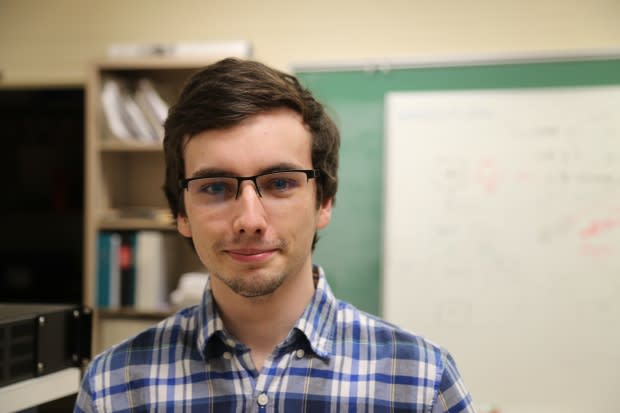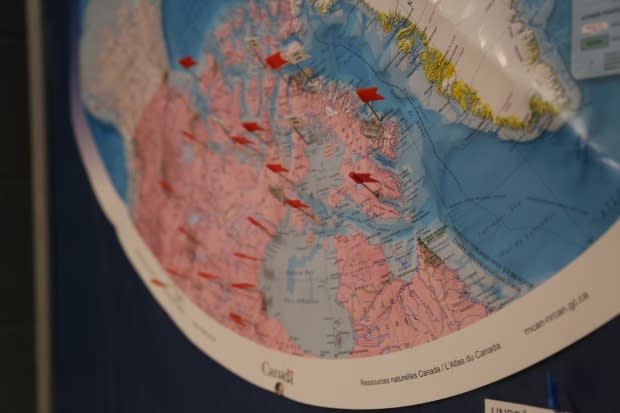How a UNB student spent his summers making a major discovery in GPS technology
A University of New Brunswick student has discovered the source of frequent irregularities in GPS navigation signals.
Connor Flynn just finished his undergraduate degree in biochemistry and is starting a master's degree in chemistry. But he's spent the past three summers studying irregularities in GPS data with his first-year physics professor, Dr. P. T. Jayachandran.
"He offered me a job over the summer. I was going into biochemistry and his research has to do with space physics but I decided to go for it," Flynn said.
Satellites orbit Earth and transmit signals to receivers, which allows for everything from the GPS tracker in your phone to aviation navigation.
Signals see lots of interference
Since the signals have to travel such a long distance through the atmosphere to the receiver, there are many types of interference, from atmospheric irregularities to signals bouncing off large objects like trees or skyscrapers — called multipath interference.
But what Flynn, Jayachandran and two others working on the research project discovered, is that signals can also interfere with each other, causing error and inconsistencies in GPS transmission data.
"Each signal has a specific code which is like a key, so it tells the receiver which satellite the signal is coming from. So that lets us position because we need to know which satellite is where," Flynn said.
"But in this case we have interference between the signals themselves, so the receiver can't tell which signal is from which satellite."

Flynn's research has been monitoring the Canadian High Arctic Ionospheric Network, a series of about 25 receivers distributed across northern Canada. The project has been funded by the Canadian Space Agency.
"In the case of this interference event it actually manifests in the data in a way that looks very similar to multipath, so at first it was hard to pick out."
GPS signals need to be coded
All satellites transmit GPS signals at the same frequency, which means they needed to be coded in order to distinguish them.
"What I was seeing was that at any given time, at two different stations or at one station, there were two satellites that were showing the exact same peak in frequency from their signal. So that's not normal because each satellite should be unique," Flynn said.
"From the best that we can tell we believe that these codes are being stretched out or compressed mid-air so they resemble a different code."
When this happens, Flynn said the receiver has two codes that are the same and can't tell which one came from where.
"It felt really satisfying to know that we weren't chasing nothing these past three years. Because I found [the irregularity] in my first summer, but it wasn't until my third summer that we actually found what was causing it."

The research group is still in the process of quantifying the effect of inter-signal interference, but Flynn has high hopes the discovery can be used to improve the effectiveness of GPS technology.
Flynn presented his research findings at the American Geophysical Union Fall Meeting 2018 in Washington, D.C., and his research has been published in the journal GPS Solutions.
Even though he's continuing his studies in chemistry, Flynn plans to continue working on his research part-time.
"I feel like transdisciplinary science and combining multiple areas of science is really the future of science. If you look to the past that's what they did, they didn't just focus on one specific science," he said.

